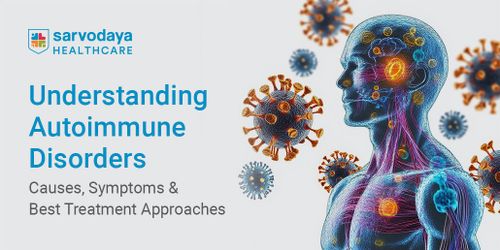In a world full of fast food, crash diets, and busy schedules, it’s easy to forget the basic truth - what we eat has a direct impact on how we feel, think, and function. The balanced diet goes far beyond weight management. A proper diet supports your immune system, strengthens your bones, boosts your brainpower, and keeps chronic illnesses at bay. The benefits are lifelong.
This article explores the 10 importance of a balanced diet, explains its key principles, and helps you understand how to create your own healthy food plan. Because when you eat well, you live well - it’s that simple.
What is a Balanced Diet?
The function of balanced diet is to nourish the body with a mix of carbohydrates, proteins, healthy fats, vitamins, minerals, fibre, and water. Each nutrient plays a unique role.
The principle of a balanced diet rests on three ideas:
- Moderation: Not too much or too little of any one food group.
- Variety: Eating different kinds of foods for complete nutrition.
- Adequacy: Ensuring all nutrient needs are met.
Following these principles helps maintain long-term health, energy levels, and overall well-being.
Importance of a Balanced Diet
The benefits of a balanced diet are both immediate and long-term. Whether you’re a child, adult, or senior, your body depends on proper nutrition to function at its best. The 10 importance of a balanced diet is given below:
- Boosts Immunity: A well-balanced diet strengthens your immune system, helping you fight infections more effectively.
- Improves Mental Health: Nutrient-rich foods like leafy greens, nuts, and fish can improve focus and reduce symptoms of anxiety or depression.
- Helps Bones Grow Stronger: Foods rich in Calcium and Vitamin D help maintain bone health and reduce the risk of osteoporosis.
- Aids Digestion: Fiber from fruits, vegetables, and whole grains supports healthy digestion and prevents constipation.
- Enhances Skin and Hair Health: Vitamins A, C, and E, along with healthy fats, promote glowing skin and shiny hair.
- Helps Maintain Healthy Weight: A balanced diet keeps calorie intake in check and helps avoid unhealthy weight gain.
- Lowers Risk of Chronic Diseases: It reduces your chances of developing diabetes, heart disease, and certain cancers.
- Supports Brain Development: Especially important for children and adolescents in their growing years.
- Provides Consistent Energy: Proper nutrition helps you avoid energy crashes and fatigue throughout the day.
- Improves Sleep Quality: Balanced meals regulate hormones that influence sleep patterns.
Key Components of a Balanced Diet
To create an effective healthy food diet chart, it’s important to know what goes into a balanced plate. Here are the core components:
- Carbohydrates: Found in rice, chapatis, fruits, and vegetables. They’re your body’s main source of energy.
- Proteins: Found in lentils, eggs, fish, meat, and dairy. Proteins repair and build tissues and muscles.
- Fats: Healthy fats from nuts, seeds, ghee, and olive oil support brain and heart health.
- Vitamins and Minerals: They are found in foods like fruits, vegetables, dairy, and whole grains. They regulate body functions like metabolism, immunity, and healing.
- Fibre: Found in oats, legumes, and leafy greens. It improves digestion and helps maintain cholesterol balance.
- Water: It is important in almost all body processes, for example, in regulating temperature and detoxification.
Sample Nutritious Diet Chart
If you prepare a chart on balanced diet chart for yourself, you don’t need to add complicated meals or exotic ingredients. It can be a simple plan where you have normal food in a systematic manner.
An example of a diet chart for a healthy body suitable for an average adult is given below:
- Early morning: Lukewarm water with lemon or soaked almonds
- Breakfast: Vegetable upma/poha with curd or oats porridge with fruits
- Mid-morning: A seasonal fruit or coconut water
- Lunch: 2 rotis, 1 bowl of dal, seasonal sabzi, salad, curd
- Evening snack: Roasted chana or sprouts with green tea
- Dinner: 1 bowl of khichdi or light vegetable soup with multigrain toast
This chart can be adjusted based on age, activity level, and specific health needs. The goal is to nourish your body consistently and avoid empty calories.
Balanced Diet Diagram
A visual tool can make healthy eating much easier to understand and follow. That’s where a balanced diet diagram comes in handy.
One of the most commonly used formats is the “Food Plate” model. It divides a plate into key sections:
- Half the plate for fruits and vegetables
- One-quarter of whole grains like brown rice or whole wheat roti
- One-quarter for proteins such as dal, paneer, or chicken
- A small side portion for dairy, like curd or milk
- Plenty of water on the side
Whether you draw it yourself or download one, using a balanced diet diagram can make meal planning clearer, smarter, and more consistent.
Advantages of a Balanced Diet in Daily Life
There’s no denying the countless advantages of a balanced diet—from how you feel each morning to how your body functions in the long run.
Let’s look at how a well-balanced approach to food positively impacts your day-to-day life:
- Steady Energy Levels: No more sugar crashes or post-meal fatigue. Having balanced meals helps .keep your blood sugar stable.
- Better Mood & Focus: Proper nutrition affects brain chemicals that regulate mood and attention.
- Strong Immunity: Your body becomes more resilient to seasonal flu, infections, and even long-term illness.
- Improved Digestion: A high-fibre diet prevents bloating, acidity, and constipation
- Healthy Skin & Hair: Nutrient-rich foods support skin elasticity and reduce hair fall.
- Hormonal Balance: Especially for women, a balanced diet helps manage PMS, PCOS, and other hormonal imbalances.
Tips for Following a Healthy Food Diet Chart
Creating a healthy food diet chart is easy — sticking to it is the real challenge. But with some simple strategies, you can turn it into a lifelong habit:
- Plan Meals: Prepping meals weekly saves time and reduces unhealthy snacking.
- Keep It Simple: Choose local, seasonal foods that are easily available.
- Don’t Skip Meals: Skipping leads to overeating later and disturbs metabolism.
- Stay Hydrated: Drinking enough water supports digestion and appetite control.
- Mindful Eating: Avoid screens during meals. Be mindful while eating and pay attention to your hunger cues.
- Treats in Moderation: A cheat meal once in a while is okay — just keep balance in mind.
Conclusion
A balanced diet isn’t just a wellness trend - it’s a way of life. It fuels your body, sharpens your mind, and protects you from a wide range of health issues. By understanding the function of a balanced diet and applying the principle of balanced diet, you give yourself the best shot at a long, active, and disease-free life.
At Sarvodaya Hospital Faridabad, we understand how deeply nutrition affects every aspect of your health. Our team of experienced dieticians, general physicians, and specialists work together to create personalised nutrition plans. Whether you're managing a chronic condition or simply trying to lead a healthier life, a preventive consultation can help you get started with the right nutritious diet chart. We don’t just treat - we support you in taking control of your well-being.
Incorporate a healthy food diet chart into your daily routine, use a balanced diet diagram as your guide, and remember - every healthy choice you make today is an investment in a better tomorrow.



















